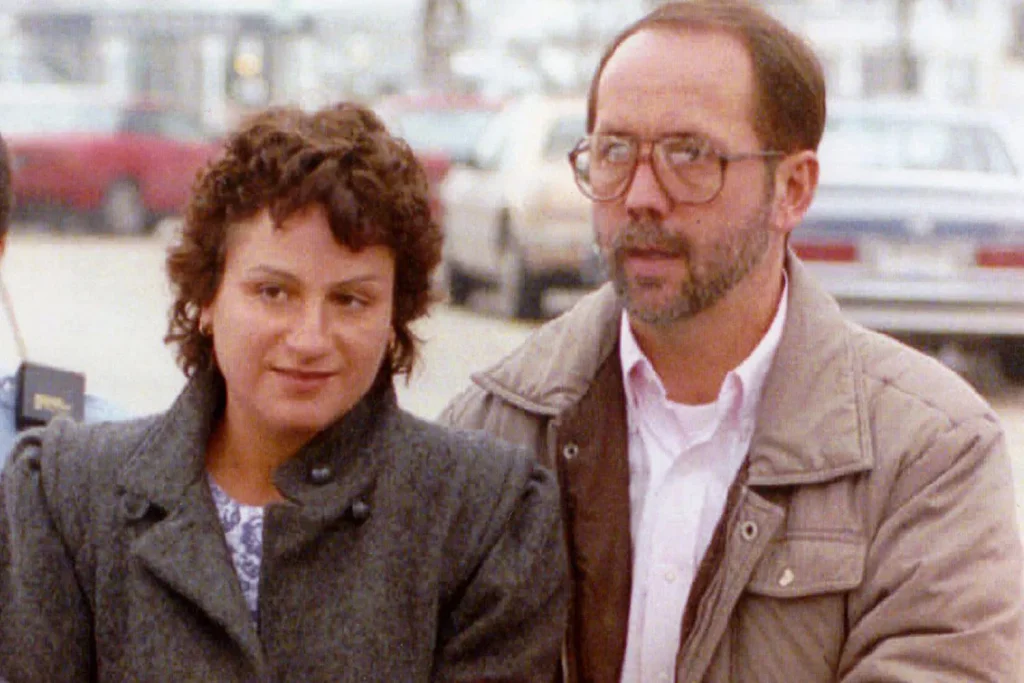They Left Their Kids Alone on Christmas and Flew to Mexico — Inside the 1992 Case That Outraged the Nation and Changed Illinois Law Forever
In December 1992, a quiet Chicago neighborhood became the center of a national debate after a discovery so unsettling that it dominated front pages, fueled talk-show outrage, and pushed lawmakers to confront gaps in child-neglect statutes. What unfolded was a story of two young sisters left entirely on their own during the holidays, while their parents boarded a plane to Acapulco. It was a case that horrified the country not only because of its details, but because it forced Americans to reckon with the uncomfortable question of how something like this could have happened at all.

Nicole Schoo was just nine years old. Her sister Diana was four. It was Christmas week in Chicago, a time when most homes were filled with the familiar warmth of family gatherings, holiday meals, and the comforting hum of togetherness. But inside the Schoo home, the lights stayed off, the refrigerator held only TV dinners, and the two little girls were navigating the long days alone. Their parents, David and Sharon Schoo, had set off on a sunny getaway to Mexico, leaving the children with instructions, microwavable meals, and little else.
For days, no one knew what was happening inside their house on a quiet suburban street. The girls had been seen by neighbors occasionally, but nothing that sounded alarm bells. Nicole, old enough to understand responsibility but far too young to shoulder it, did her best to care for her sister. She heated frozen dinners, kept the doors locked, and tried to maintain some normalcy. For a nine-year-old, that meant keeping herself composed even when she felt scared, cold, or overwhelmed. She knew her parents were gone. What she did not know was when—if ever—they would be coming back.
Their discovery came almost accidentally. A neighbor noticed something felt off: the girls seemed to be alone too often, no adults coming or going, no holiday bustle, no lights. When the police arrived, they found the sisters living alone in conditions that stunned even experienced officers. Two young children, unsupervised for days during one of the coldest, most emotionally sensitive weeks of the year. Christmas decorations stood untouched. Gifts meant for the children sat unopened. The house was quiet except for the voices of two little girls who had been waiting for parents who were hundreds of miles away.
Officers arranged for the girls’ safety immediately. Nicole and Diana were taken into protective custody, with authorities scrambling to understand how long they had been alone and why. Meanwhile, thousands of miles away, their parents were enjoying a warm vacation in Acapulco—unaware of the media storm building rapidly back home.
By the time David and Sharon Schoo landed at O’Hare International Airport on December 29, reporters were waiting. Cameras followed their every step as police arrested them right at the terminal, an unforgettable scene that played across national broadcasts. They appeared stunned by the attention, but the public had already formed a clear opinion. For millions of Americans, the idea of leaving two young children alone over Christmas — with only frozen dinners and a nine-year-old in charge — was unfathomable.
The legal system moved quickly, and the case ignited widespread debate about what, exactly, constitutes child neglect. Illinois law at the time lacked a clear minimum age for children to be left home alone. Prosecutors charged the Schoos with child endangerment, and the case rapidly became a flashpoint for political and social discussion. It wasn’t just about two parents and their choices — it was about a gap in legislation that many believed left children vulnerable across the state.
During court proceedings, additional details emerged that deepened the public’s reaction. Authorities reported that the girls had been left alone for the entire duration of their parents’ vacation, and that there was no evidence of a designated caregiver checking on them. The children had been instructed to stay inside, eat the frozen meals, and wait. In interviews, neighbors expressed heartbreak and bewilderment, saying they wished they had known sooner. One neighbor shared that the children were “quiet, polite, and never caused trouble,” making it even harder to detect what was really going on.
As the case evolved, lawmakers faced mounting pressure to address the legal ambiguity that had allowed this situation to occur. Many argued that if a nine-year-old could be considered old enough to supervise a four-year-old for several days, then the law desperately needed clarification. Parents across Illinois, and indeed across the country, weighed in on debates about responsibility, cultural norms, and what age truly marks the line between childhood independence and foreseeable danger.
Advocates for stronger child-welfare protections used the Schoo case as proof that clearer standards were necessary. Within months, Illinois lawmakers drafted legislation that set more explicit guidelines regarding when children could be left unattended. The case became one of the most cited examples in the push for updated child-neglect statutes, ultimately contributing to changes that ensured parents would face clearer rules — and clearer consequences — in the future.
But amid the legal and political whirlwind, people didn’t forget the children at the center of the story. Nicole and Diana became symbols of resilience. Many still remember the expressions on their faces captured in archived news footage — a blend of confusion, innocence, and the quiet strength of children forced to adapt to a situation that never should have been theirs to handle. Social workers who later met with the girls described them as sweet and soft-spoken. They were placed under the care of the state, and fortunately, they were found to be physically unharmed.
The story faded from national headlines as years passed, but its impact didn’t. In many ways, it became one of those rare cases that fully reshaped public policy, changing the way a state viewed child safety. For families across Illinois, it was a reminder that laws must evolve to protect the most vulnerable, and that assumptions about what children can handle should never override their basic need for safety and supervision.
For the public, the case became one of those cultural reference points — a story that resurfaces every few years as new parents learn about it, often reacting with the same disbelief that people felt in 1992. How could anyone leave two small children completely alone for Christmas? How could a nine-year-old carry such weight on her shoulders? And how did no one notice sooner?
The questions are haunting, but they’re also why the case has remained in the public consciousness for more than three decades. It wasn’t just about unlawful decisions; it was about the emotional shock of imagining children spending Christmas in silence, reheating frozen dinners while their parents lounged on a beach thousands of miles away. The contrast was too stark, too painful, too deeply against the instinctive protectiveness people feel toward young children.
Today, the Schoo case is often taught in social-work and criminal-justice programs as a prime example of how neglect can hide in plain sight. It illustrates how communities can miss subtle signs, how laws can fall behind real-world needs, and how a single case can spur legislative reform. And for those who lived through the media coverage at the time, it remains one of the most unforgettable child-welfare stories of the early ’90s.
Nicole and Diana were eventually placed into safer long-term arrangements, giving them the stability they needed as they recovered from the ordeal. Because of their ages at the time, they were shielded from most of the public fallout. Their lives moved on. The adults who debated their story, on the other hand, were left with a lasting lesson about the importance of intervention and the responsibility society holds toward its youngest members.
The parents, David and Sharon Schoo, became recognizable faces overnight, not for an accomplishment or success, but for a decision that millions saw as incomprehensible. Court records show that they eventually pleaded guilty to charges related to child endangerment, and the legal consequences they faced served as another layer of warning to adults contemplating similar choices. The public judged them harshly, but the legacy of the case is not about punishment — it’s about prevention.
Illinois’ strengthened laws, influenced in part by this case, gave authorities clearer tools to act when young children are left in unsafe situations. The changes empowered social workers, allowed prosecutors to intervene earlier, and reassured the public that such circumstances would not fall into gray areas again.
More than thirty years later, the case still resonates because it highlights a fundamental truth: childhood is a fragile season, and its safety depends not only on parents, but on communities, lawmakers, and systems willing to prioritize it. The Schoo sisters’ story remains a reminder that vigilance, compassion, and proper legal frameworks are often all that stand between a child and potential harm. And that a single case, no matter how shocking, can leave behind a legacy of protection that endures far longer than the headlines that first brought it to light.


